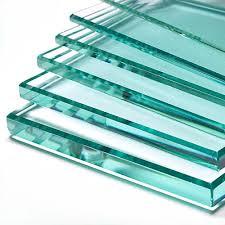A glass top table is one of the most versatile and elegant pieces of furniture you can add to your home or office. It brings lightness, sophistication, and a modern touch to any room. But when it comes to selecting the right glass for a glass top table, there are many factors to consider — from strength and thickness to style and finish.
Choosing the right glass isn’t just about looks. The proper type ensures safety, durability, and functionality for everyday use. In this article, we’ll explore everything you need to know before buying glass for your table top.
Why Use Glass for a Table Top?
Glass has been a favorite material for table tops for decades because of its combination of practicality and beauty. Here’s why people love it:
-
Elegance and Style: A glass surface instantly elevates the look of furniture, giving it a sleek and modern appearance.
-
Durability: When you choose the right glass type, it can withstand daily use, scratches, and spills.
-
Easy Maintenance: A quick wipe keeps it sparkling clean.
-
Surface Protection: Glass protects wooden or metal tables from scratches, stains, and heat damage.
-
Illusion of Space: The transparent surface creates an open, airy feel — perfect for smaller rooms.
Types of Glass for Glass Top Tables
Not all glass is the same. The right choice depends on where and how you plan to use the table.
1. Tempered Glass
Tempered glass is the most recommended option for table tops. It’s made by heating glass to high temperatures and cooling it quickly, making it up to five times stronger than regular glass. If it does break, it shatters into small, blunt pieces instead of sharp shards — making it safe for homes with kids or pets.
2. Annealed (Standard) Glass
Annealed glass is basic float glass. While it’s affordable, it’s also fragile and can break into dangerous shards. It’s usually used only for protective overlays on low-risk furniture, not as a primary table surface.
3. Laminated Glass
Laminated glass consists of two or more layers of glass bonded with a clear interlayer. If broken, the glass pieces stick to the interlayer, reducing injury risk. It’s a great choice for high-end tables and public spaces.
4. Frosted Glass
Frosted glass has a soft, matte finish that reduces glare and fingerprints. It’s perfect for dining tables, office desks, or spaces where privacy and elegance are important.
5. Tinted Glass
For a bold, modern look, tinted glass is available in grey, bronze, blue, or green shades. It can match your interior theme while reducing glare.
Recommended Glass Thickness
Thickness is one of the most important factors when choosing glass for a table top. It affects both safety and durability.
| Table Type | Recommended Thickness |
|---|---|
| Protective Overlay (on wood/metal) | 1/4 inch (6mm) |
| Coffee Table | 3/8 inch (10mm) |
| Dining Table | 1/2 inch (12mm) |
| Large Conference Table | 3/4 inch (19mm) |
The larger the table, the thicker the glass should be to prevent sagging or breaking.
Edge Options for Glass Table Tops
The edges of your glass table play both a safety and aesthetic role. Here are the most popular finishes:
-
Flat Polished Edge: Smooth and shiny, great for a minimalist modern look.
-
Beveled Edge: Adds a decorative, angled edge for elegance — often used for dining tables.
-
Pencil Polished Edge: Soft, rounded edge ideal for family-friendly furniture.
-
Ogee Edge: Decorative, curved edge that gives a luxurious, classic appearance.
Shapes and Customization
Glass can be cut into different shapes to match your furniture base:
-
Rectangle: Traditional and versatile, perfect for dining rooms and offices.
-
Round: Creates a softer, more social seating arrangement.
-
Square: Great for compact spaces.
-
Oval: Blends the flow of a round table with the functionality of a rectangle.
-
Custom Shapes: Perfect for unique furniture bases or creative designs.
Style and Design Tips
Here are some expert tips to make your glass top table stand out:
-
Pair a clear glass top with a natural wood base for a Scandinavian-style look.
-
Use tinted glass with a metal frame for an industrial or modern interior.
-
Opt for frosted glass for a softer, more sophisticated atmosphere.
-
Consider back-painted glass in white, black, or bold colors for a striking statement piece.
Care and Maintenance
One of the biggest advantages of glass is its easy maintenance:
-
Clean with a soft microfiber cloth and mild glass cleaner.
-
Avoid abrasive pads that could scratch the surface.
-
Use coasters and placemats to prevent scratches from sharp objects.
-
Check periodically that the glass bumpers (rubber pads) under the top are secure.
Safety Considerations
While glass is strong, safety is still important:
-
Always choose tempered or laminated glass for tabletops used daily.
-
Ensure the base of your table can fully support the weight of the glass.
-
For outdoor use, consider tempered glass with UV protection to prevent discoloration.
Eco-Friendly Aspect of Glass
Glass is a fully recyclable material. Choosing a glass table top is an environmentally conscious decision since it can be reused or recycled without losing quality. Its transparency also allows for more natural light reflection, reducing the need for artificial lighting.
Final Thoughts
When it comes to glass for a glass top table, the right choice makes a big difference in safety, durability, and style. Tempered glass remains the top choice for most homeowners because of its strength, safety, and crystal-clear appearance.
Whether you’re buying a dining table, coffee table, or a protective overlay for a wooden surface, consider thickness, edge style, and finish to create a piece that matches your interior perfectly. With proper care, your glass table top will stay beautiful, practical, and stylish for years to come.

